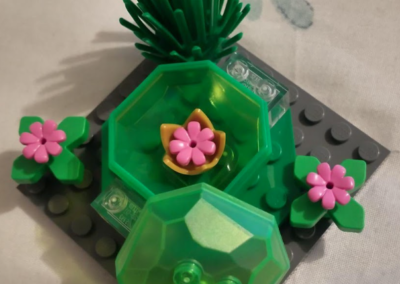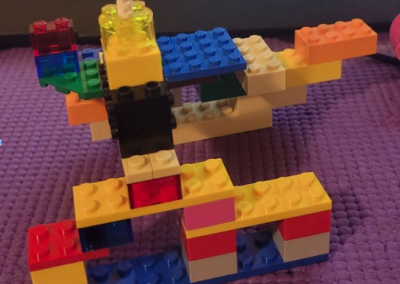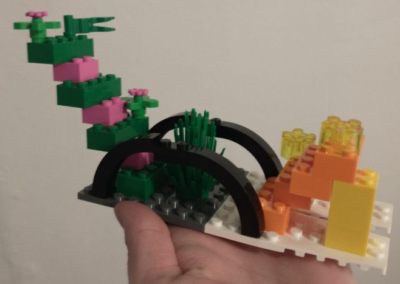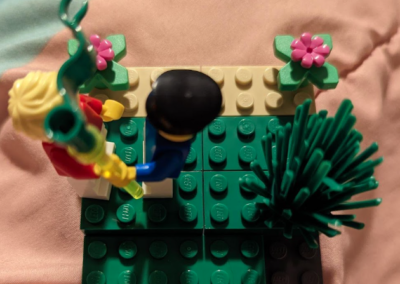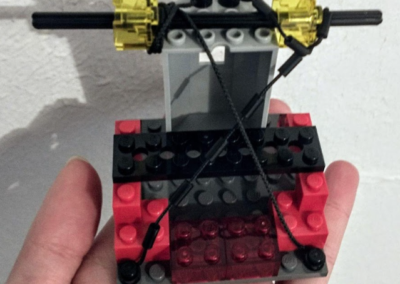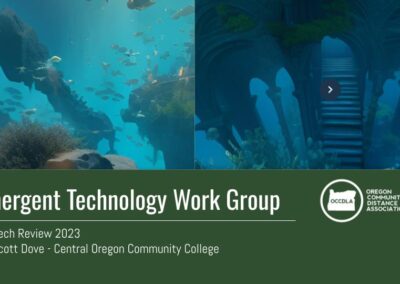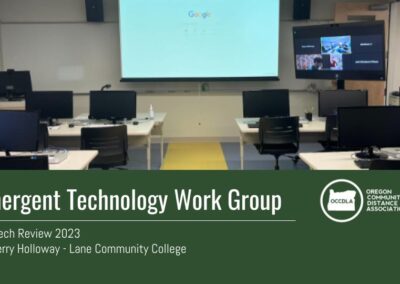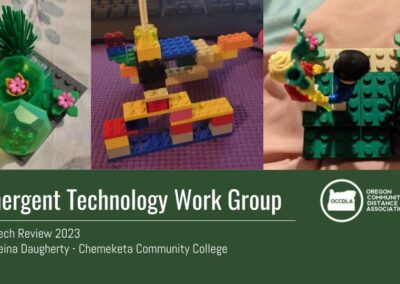EMERGENT TECHNOLOGY WORK GROUP - ED TECH REVIEWS
Incorporating Lego Serious Play in Remote Psychology Classes
by Reina Daugherty
Psychology Instructor
Chemeketa Community College
February 27th, 2023
Exploration Intent
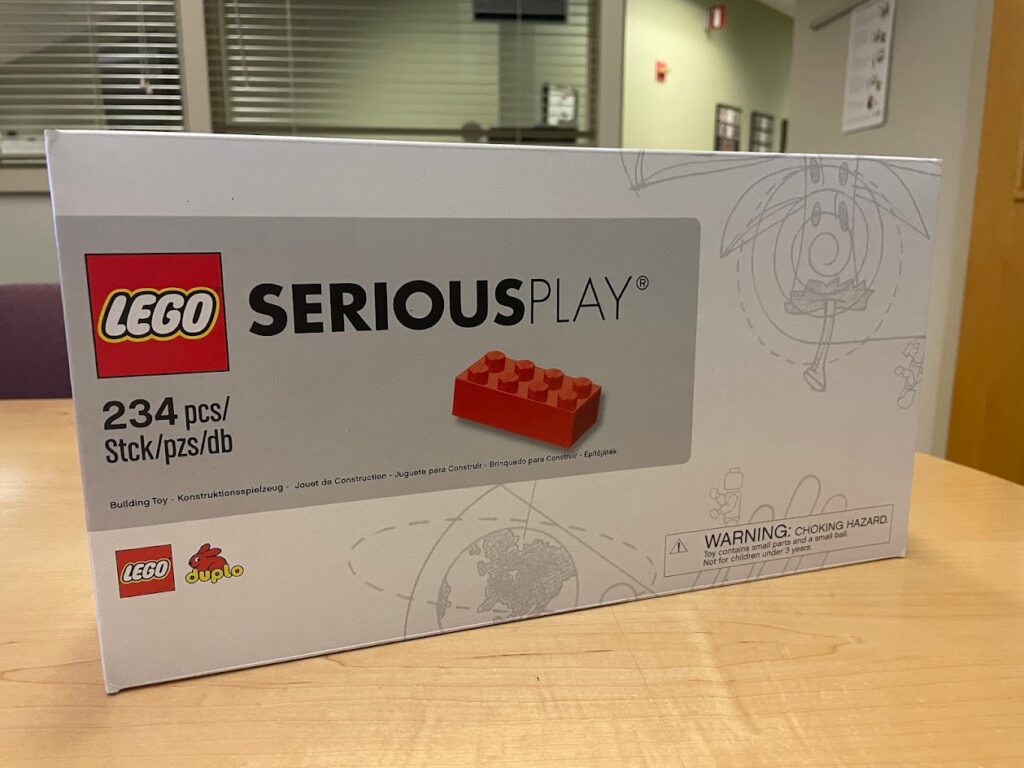 For this project, the students of my online Workplace Psychology class engaged in “serious play” using legos. I was interested in trying this out because I have an evening class on zoom that is four hours long. I wanted a way to keep students interested (and awake). This was a great option to break up the lesson and give students something to actively do. I felt that students would be excited to hear that they would get to play with legos and that it might help them look forward to coming to class (and keep them coming back).
For this project, the students of my online Workplace Psychology class engaged in “serious play” using legos. I was interested in trying this out because I have an evening class on zoom that is four hours long. I wanted a way to keep students interested (and awake). This was a great option to break up the lesson and give students something to actively do. I felt that students would be excited to hear that they would get to play with legos and that it might help them look forward to coming to class (and keep them coming back).
The premise of the lego serious play method (LSP) is that the creative process of making something prompts the brain to work in a different way and unlocks new perspectives. The process of building something produces insights that don’t happen during regular discussion. Since each student prepares a model and has a turn to share, there is more balanced participation rather than conversations dominated by a select few students.
LSP includes the following steps:
- The facilitator asks a question or poses a challenge
- Participants build their own individual model in response to that question or challenge
- Each person takes a turn sharing their model and explaining what they built
- The group reflects on what they noticed and the facilitator poses deeper questions
The prompts used in this class included:
- Build a model that represents the best team you have been a part of.
- Build a model that represents a successful change process.
- Build a model that represents a favorite topic, lesson learned or takeaway from this class.
The first day using LSP
The students and I were pretty drained after the first half of class. We took a break and I was feeling a bit defeated and unsure if we would all have enough energy to continue being productive. When we came back from break, I started out right away with a lego activity. Everyone was revitalized. The first student who volunteered to share her model was a student who hadn’t ever talked in class before. She smiled when presenting her model and was proud of what she had created. I was so amazed with the process already. Not only did it give students (and myself) a burst of energy, but a previously unengaged student was now engaged. One of my nontraditional students had her kids at home with her and they took interest in the legos and built their own models with us during that portion of the class.
Challenges
It was a bit difficult to coordinate getting legos to each student. The beginning of the term is always a busy time, and students were continuing to add and drop the class. Keeping track of who was going to stay in the class, and trying to get timely responses from them, was an added feat. I think this would be much easier for in-person classes where the teacher can simply bring the legos to class.
Another challenge was getting all students to participate. Not all students wanted, or were able, to have their video on. Students were still able to verbally tell us about their model, and they were given the option of uploading a picture of their model in chat. Again, I think this would work better in an in-person environment where students can walk around the room and see all of the models. Even though LSP was adapted during COVID to be used in virtual environments, it didn’t feel like the ideal use of it.
Outcome
Overall, students seemed to enjoy the activities. The biggest difference that I noticed was in the detailed responses students gave. The short and basic answers of the past were now longer and more insightful answers. Here is one example:
“I made stairs at the bottom and there’s a plate with wheels. That represents how when you want to try something new, or to achieve a goal, you start at the bottom. Then you start by taking the first step. There are some steps that are longer than others. That means that some challenges will be easy, but some steps take longer to achieve. The reason why it has wheels is because life is still always moving when you try to achieve your goal.“
At the beginning of the term, after students were informed about the LSP component of the class, I asked students for their initial thoughts about using legos in class. The students who responded said:
- “It piqued my interest and I can’t wait”
- “I’m intrigued by this concept and would like to see what comes of it”
- “Honestly as much as I love zoom, four hours is a lot of time to sit and when you mentioned using legos I was thinking it was very interesting. It makes a lot of sense to me because I feel like for a lot of people when you are doing something it keeps your mind active while still being able to think sort of intensely. I also worked at a daycare and it was amazing to see when the kids would start drawing or playing with toys while talking to you and then they would have the most interesting thoughts and ideas. It was like you could see the wheels turning as they looked at their toys and you as they spoke. I can’t wait. It will be interesting how much progression and creativeness comes from this experiment.”
Additionally, I have provided information from three items in the course evaluation. The latter two items were added this term specifically for this project.
Evaluation item: “Course was designed to allow all students to participate fully”
Response: Average score increased from 0.6 (prior term) to 1.2 on a Likert scale from -2 to +2 (strongly disagree to strongly agree)
Evaluation item: “Using the lego serious play methodology contributed to your learning”
Response: 80% agree
20% strongly agree
Evaluation item: “Would you recommend using legos in future classes? Why or why not? “
Response: 100% marked “yes”
- Yes! I think it was a fun experiment to try something new and it helped me to focus when the class times were longer.
- Recommend. It does provide a visual reference for ideas and concepts.
- Yes, because you can be creative.
- Yes I would.
- Yes, it helps to calm the brain and think better.
Finally, here are some student creations:
2021-23 ED TECH REVIEWS
TECHNOLOGY EXPLORATION
Do you have an emergent technology you would like to explore? Submit your nomination for a technology evaluation by the OCCDLA Emergent Technology Workgroup.
The OCCDLA Emergent Tech Work Group receives nominations for instructional technology review from work group members and our nomination form, available to all instructors and administrative staff of all Oregon Community Colleges.
Questions?
For questions about the Emergent Technology Work Group:
Administrative Contact:
Monica Marlo
Portland Community College
monica.martinezgallagher@pcc.edu

